Costa Rica, the Rich Coast
— Central America — 6 min read
April 27 - May 3, 2010
Costa Rica, the rich coast as Columbus thought it contained a lot of gold when he landed here, has actually been made rich by bananas and its well developed ecotourism industry. It's also the most developed country in Central America and along with that comes higher prices for everything, similar to costs in the US. For this reason, most budget travelers buzz through Costa Rica, but I had to spend a few days in the capital of San Jose in order to get visas for the first few South America countries. Being the most developed country meant that it also had a good diplomatic representation from a lot of countries.
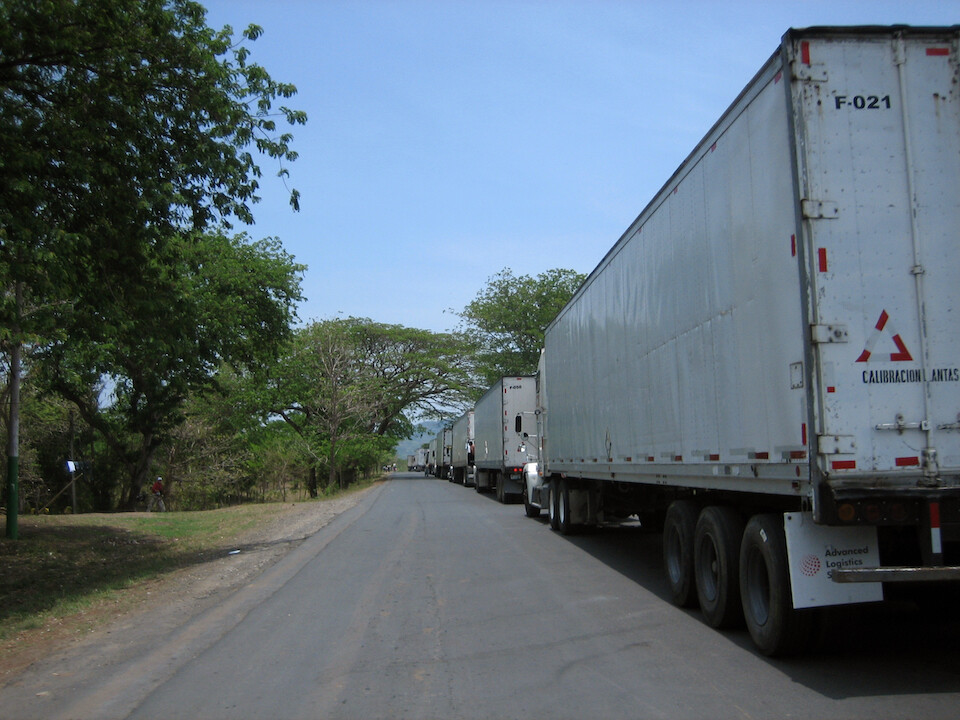
I know a couple trucks are expected at border crossings but the border between Nicaragua and Costa Rica, there's only one crossing, had a line of trucks at least 6 kms (3.5 miles) in length. This was an indication of how complex this border crossing must be.
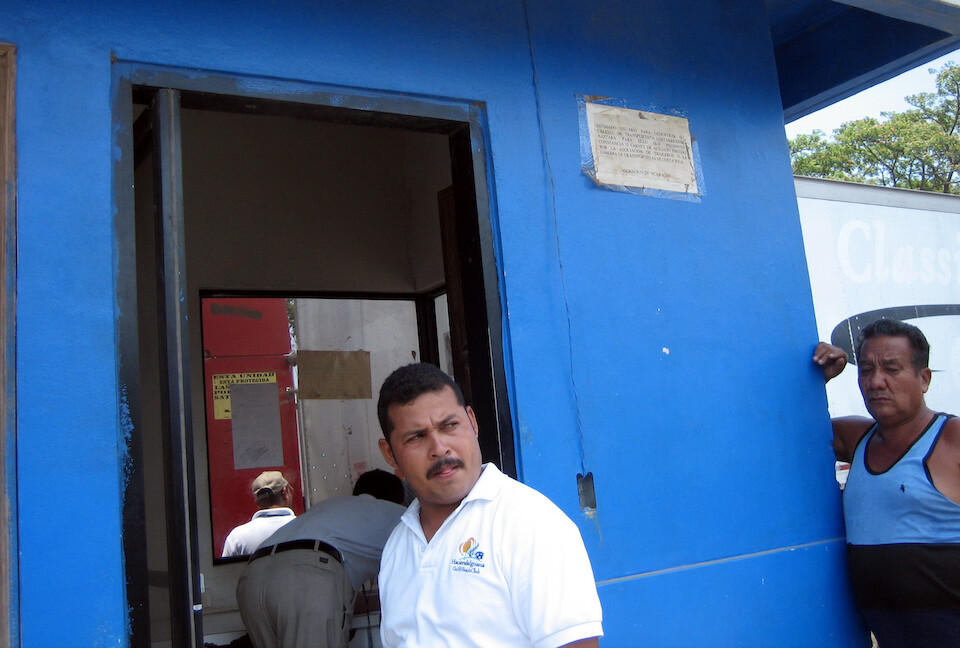
Using a helper at the border, to help me navigate all the various booths I had to go to and get stamps from.
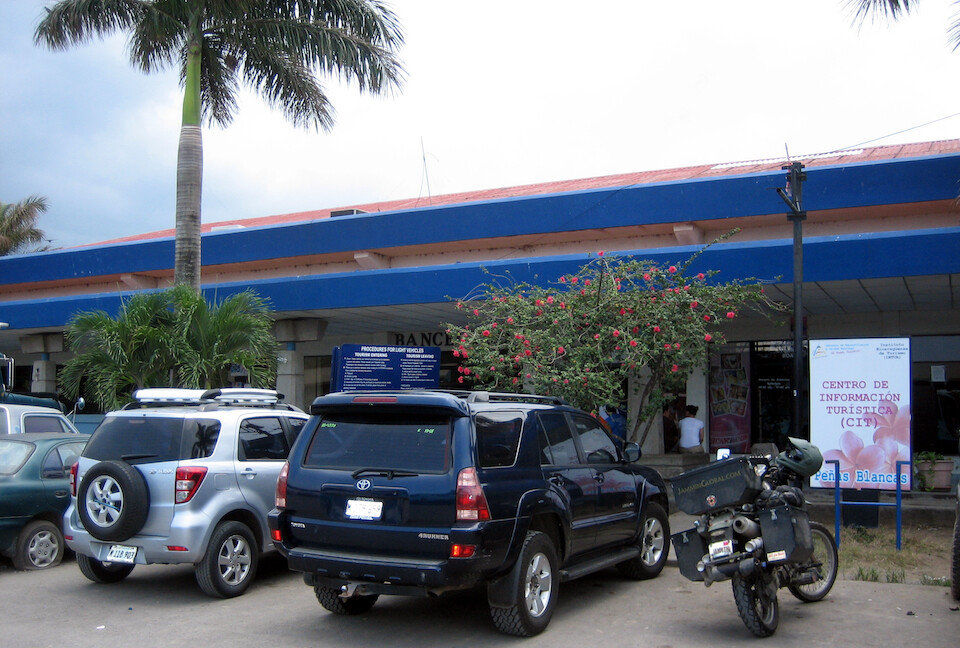
At the Nicaraguan customs office. I've been able to navigate all the previous border crossings with no problem, but that was also because I went across smaller, less trafficked borders where the various buildings were close together. Here, with only one border between these countries, it was a massive operation with tonnes of people getting on and off buses, truckers trying to get their papers approved and individual travelers. The procedure was not well-signed for the unaided traveler. You get a small slip of paper as you enter the border compound and you have to get it stamped at various booths to show you've done all that is necessary and then you have to give this paper to an officer in order to exit the border compound.
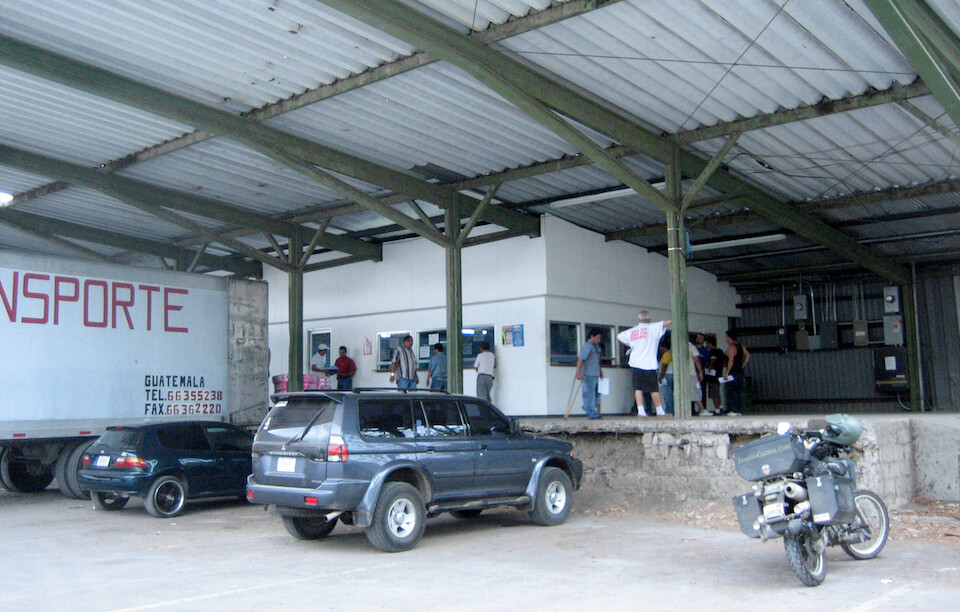
At the Costa Rican customs office, which was a similar hassle to the Nicaraguan side. One thing I've noticed in these few border crossings so far is that the bureaucratic culture seems more similar across a particular border on both sides as opposed to being similar among a country's various border posts. As in, the bureaucracy seemed similar between Honduras and Nicaragua and between Nicaragua and Costa Rica. They're probably just trying to match the other guy's bureaucratic loopholes.
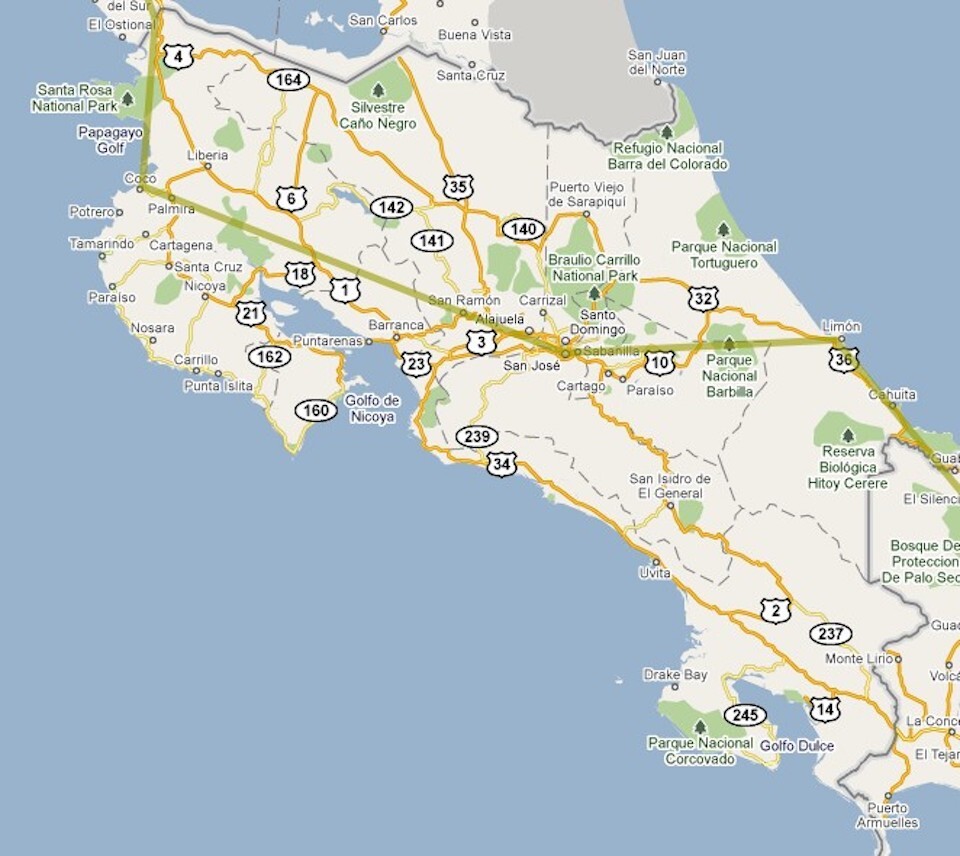
My route map through Costa Rica. Click on it to go to the interactive version in Google Maps.
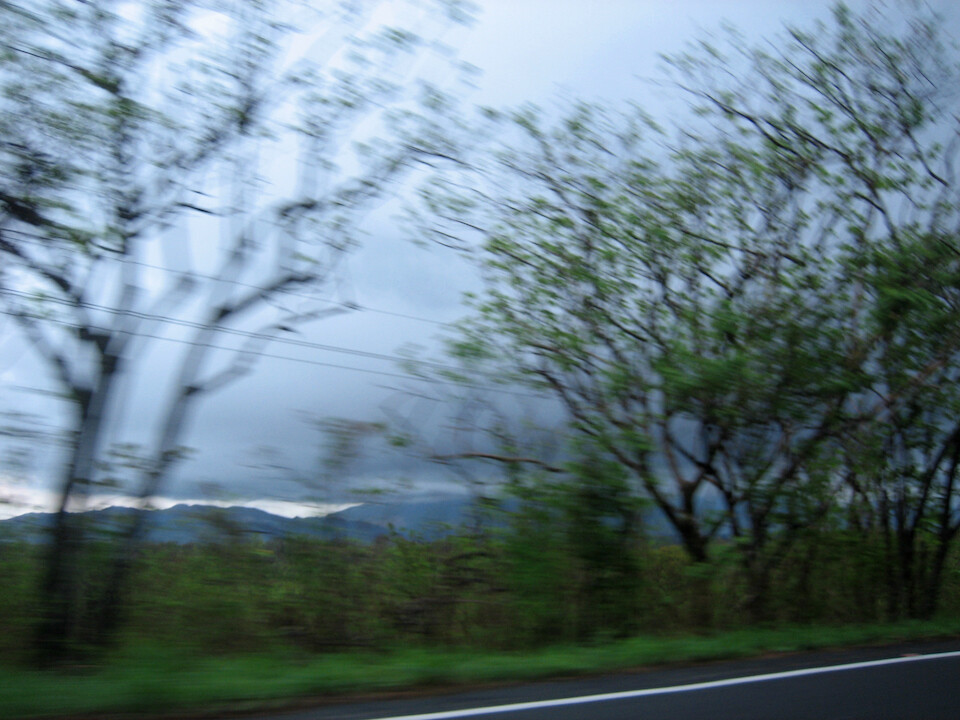
The skies opened up as the rainy season had officially started as I made my way to Playa del Coco, a beach town about an hour south of the border to stay with ADVer Chris.

The view from Chris' apartment, looking across the bay.
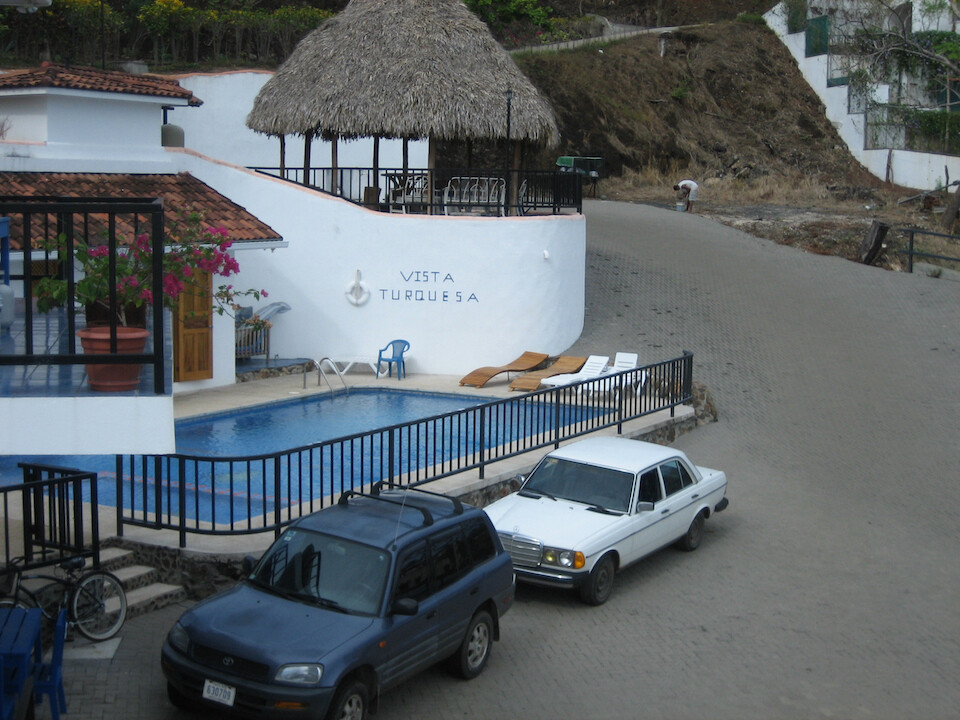
The well-furnished compound.
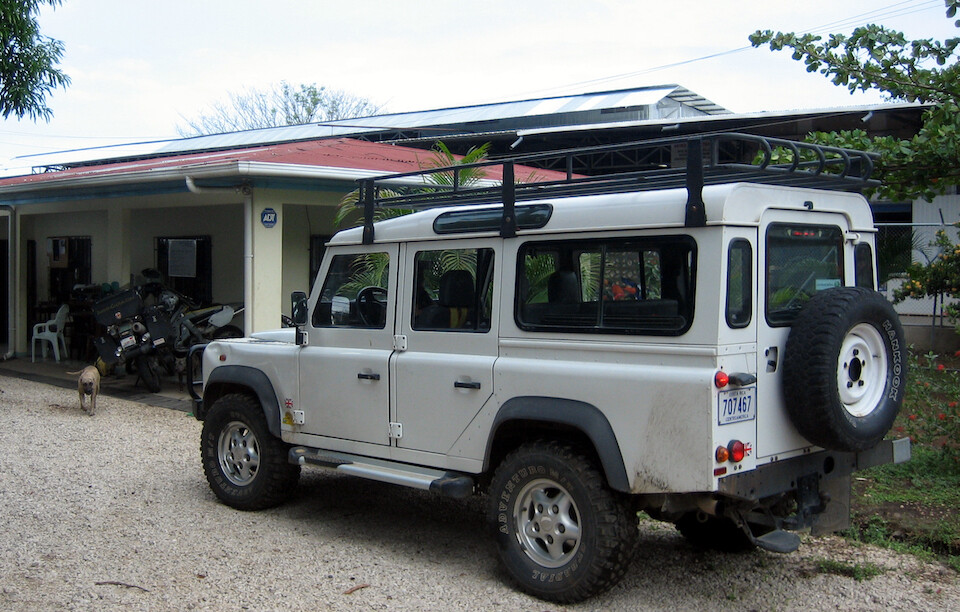
Chris' Land Rover Defender at his girlfriend Anna and her dad's motorcycle and car repair shop. I got a good deal on a new chain that was a left over from a Honda Africa Twin repair job.
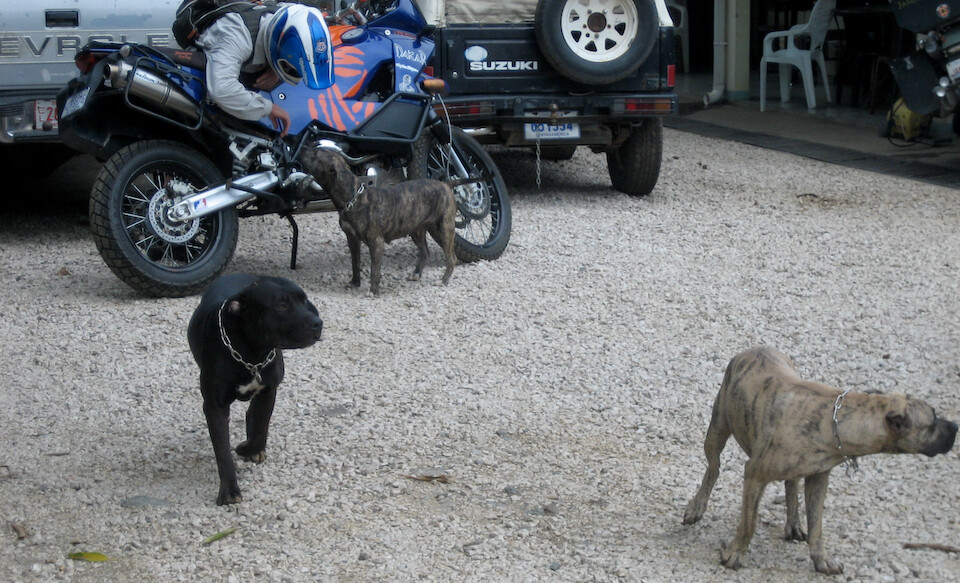
Chris and his KTM 990s being greeted by Anna'a various pit bulls. They were all super friendly. Chris used to race professionally in the AMA Motocross Championship and traveled around the US and South Africa with the KTM factory team along with Red Bull sponsorship. He's currently taking it easy in Costa Rica and discovering all the good off-road riding that's to be had.
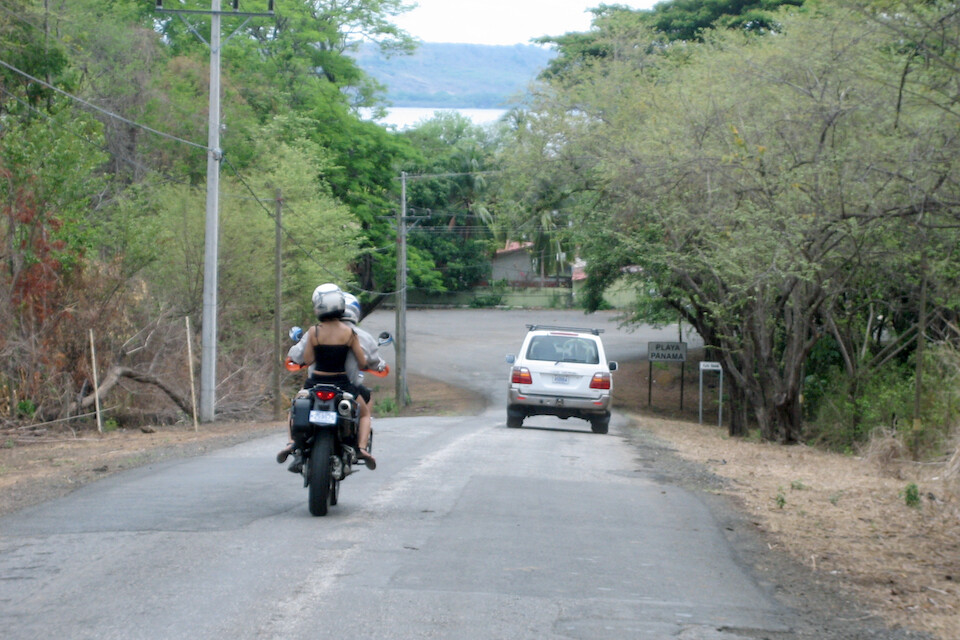
Leading me out of town on my way to San Jose.

It was nice and sunny in the morning and then the rains kicked in after lunch.
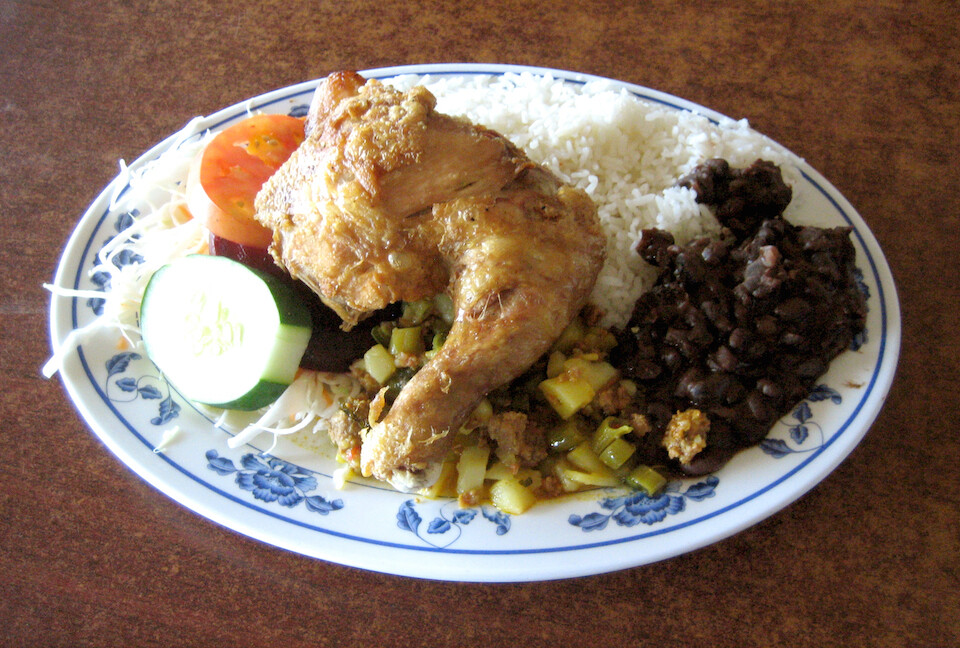
A typical set meal called a consado of rice, beans and chicken with some veggies for 2200 Colones (USD 1 = CL500).
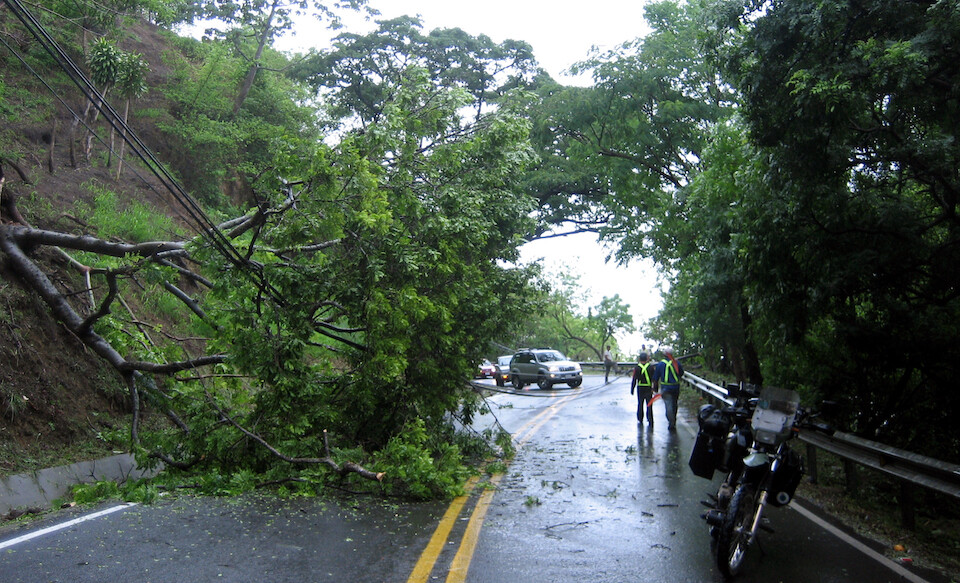
As I was riding the steep, hilly road in heavy rains getting into San Jose, I came around a corner and found a tree had freshly taken down a telephone wire pole. We were the first few people on site.
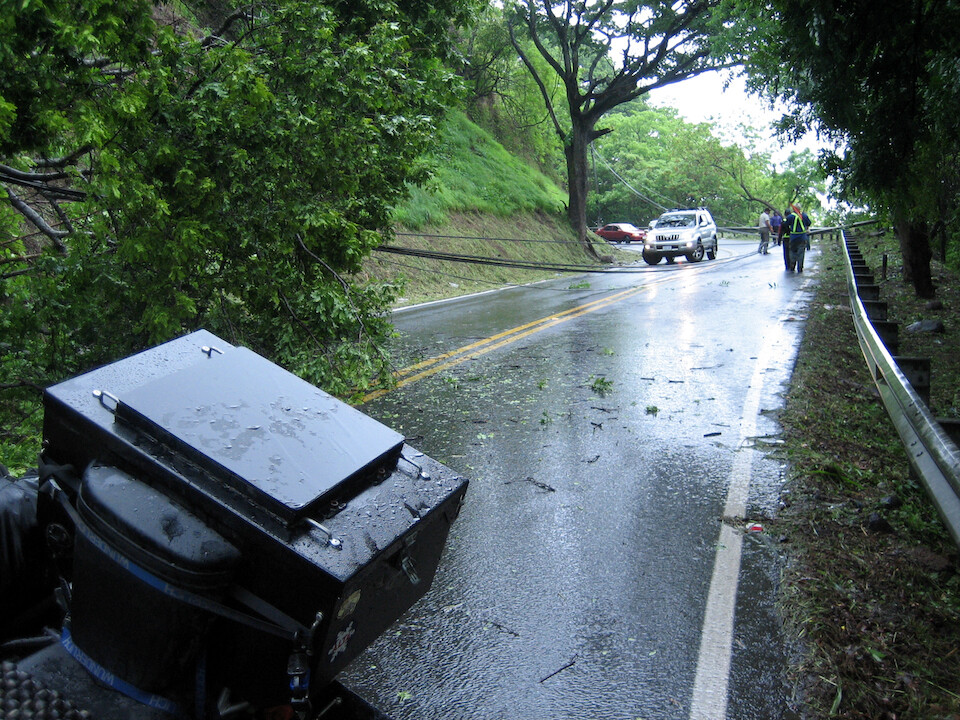
One of the drivers lifted up the wires enough for me to get under. These were the first few rains of the season and anything that was loosely held together is going to get washed away. The new rains also made the roads slick as it was washing away all the oils from the road surface. A few corners further down, I had to down-shift to first gear to really slow down for this sharp hair-pin turn and with the roads so slick, the rear tire broke loose and the bike went down. We slid for a few feet before stopping and no injury to me as I immediately stood up and picked up the bike with the help of a passing rider. Only damage on the bike was a broken highway peg. No pictures as it was too steep to park the bike and traffic was coming.
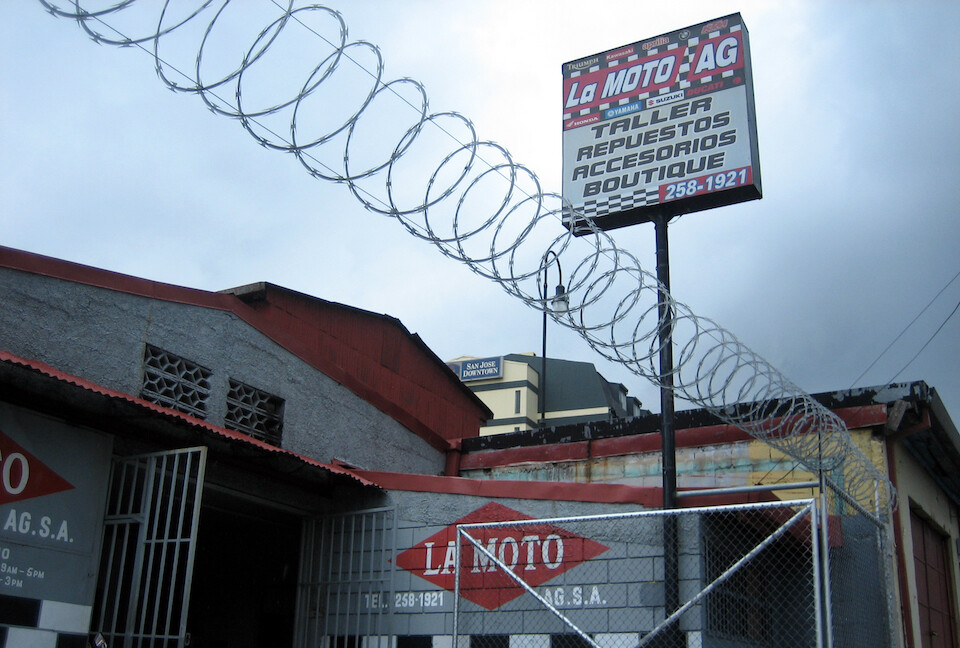
I made it safely to La Moto, a motorcycle accessory shop in San Jose, where ADV rider Mischa works.
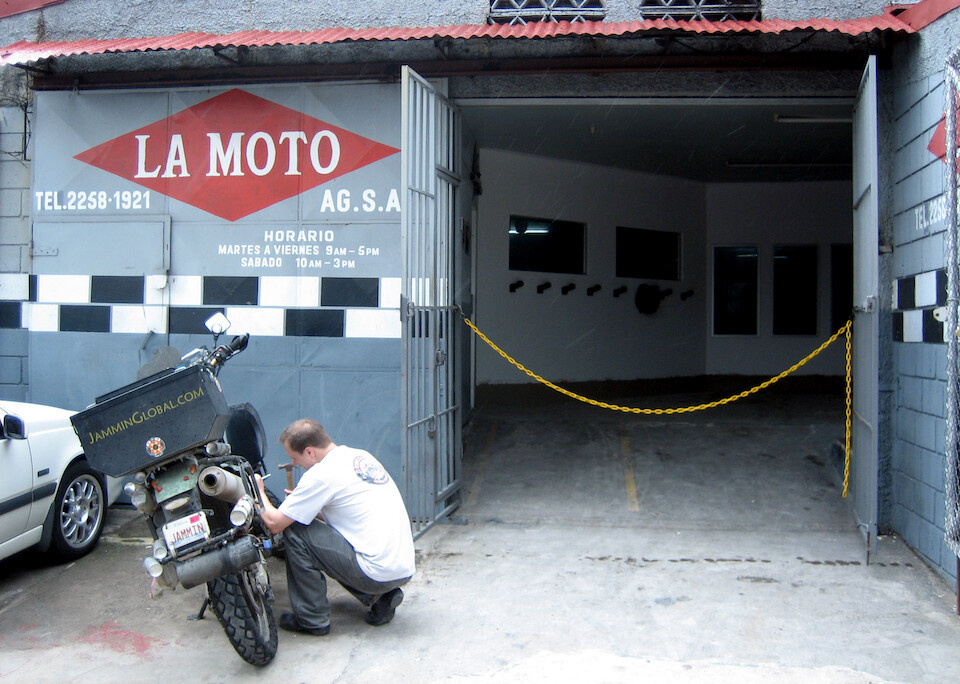
Mischa's adjusting my rear spring, raising it up a bit to reduce how much the bike sags with all the weight on the rear. The shop is run by John, who's an ex-AMA superbike racer.
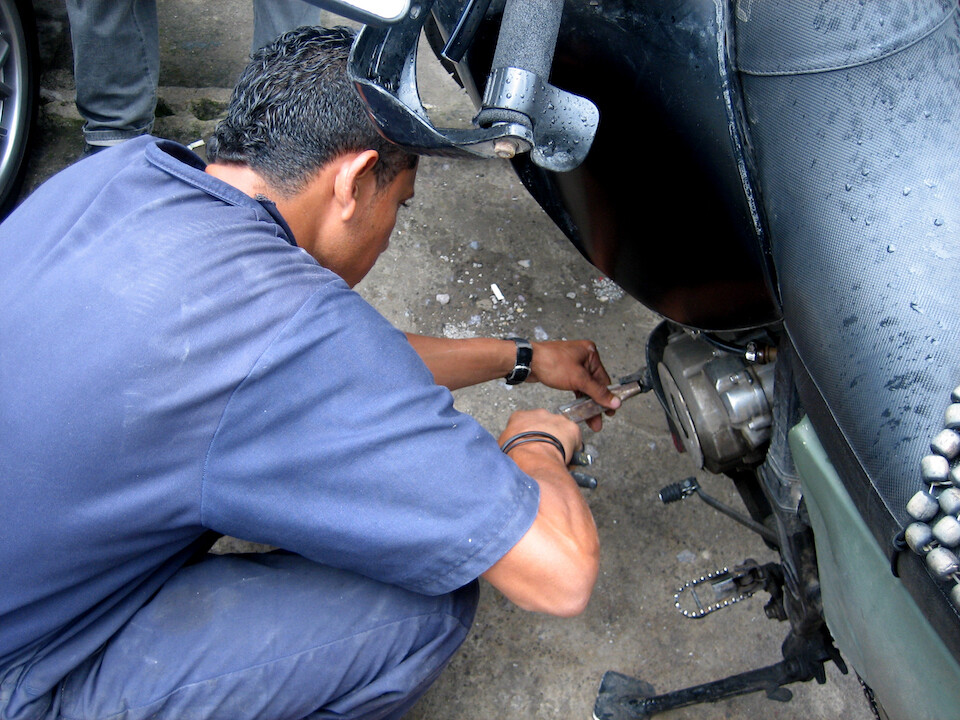
Their Nicaraguan mechanic, Elvis, fabricating a new highway peg. The original one worked well to protect the rest of the bike from damage like the shift lever and engine casing. It worked as a frame slider.
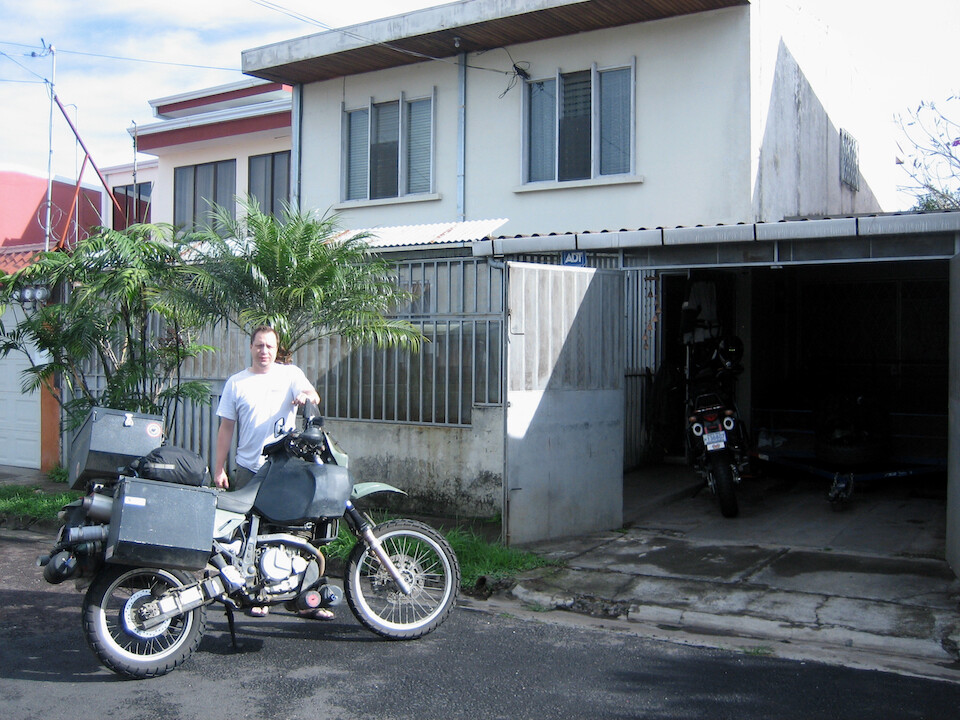
Outside Mischa's house in San Jose. His family moved from Germany about 20 years ago due to his father's health requiring warmer climes. Mishca used to work in the tourism industry before switching into the motorcycle accessory business. He's riding KTMs. I was in San Jose mainly to procure visas from the South American embassies and addresses in San Jose are unique because they don't use street names but rather give distances from landmarks. Mischa showed me where all the embassies were on Google Earth and using GPS coordinates, I had no problem navigating my way around the city. Thanks Mischa!
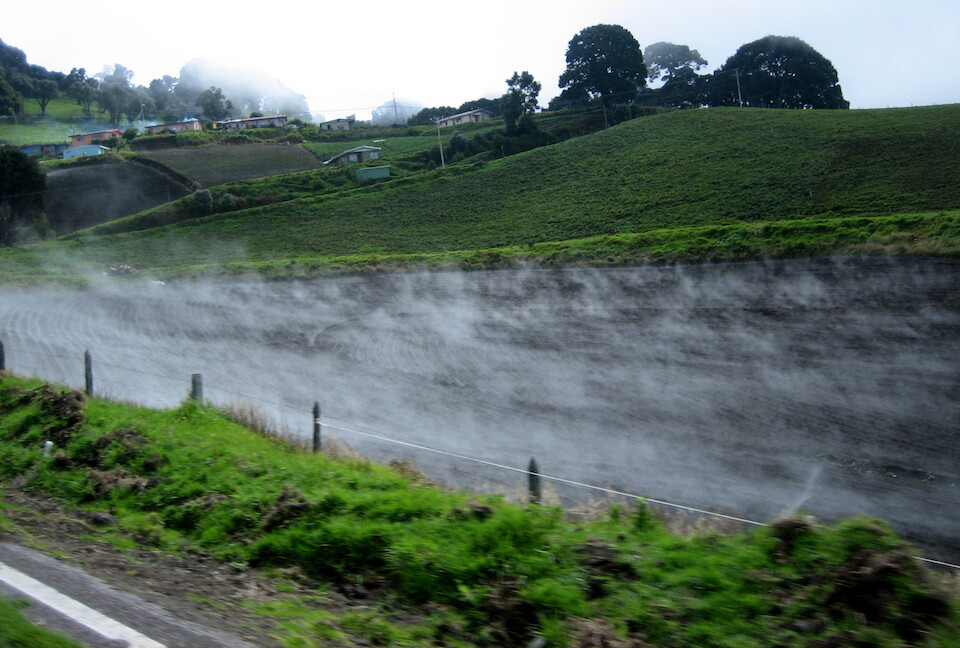
Riding up to Volcan Irazu, about an hour southeast of San Jose. In the morning, the tilled fertile farm land on the flanks of the volcano were exhaling moisture as the sun warmed it up. It looked like the volcano was breathing through its sides.
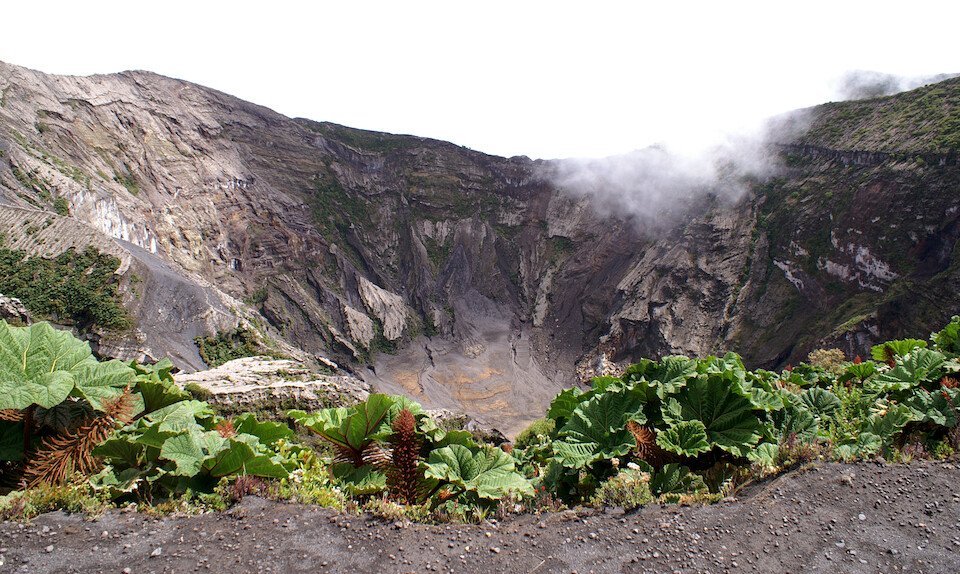
The main crater of Volcan Irazu at a height of 3,300 m (11,000 ft). The crater itself was 300 m (1,000 ft) deep and 1 km (3,300 ft) in diameter.
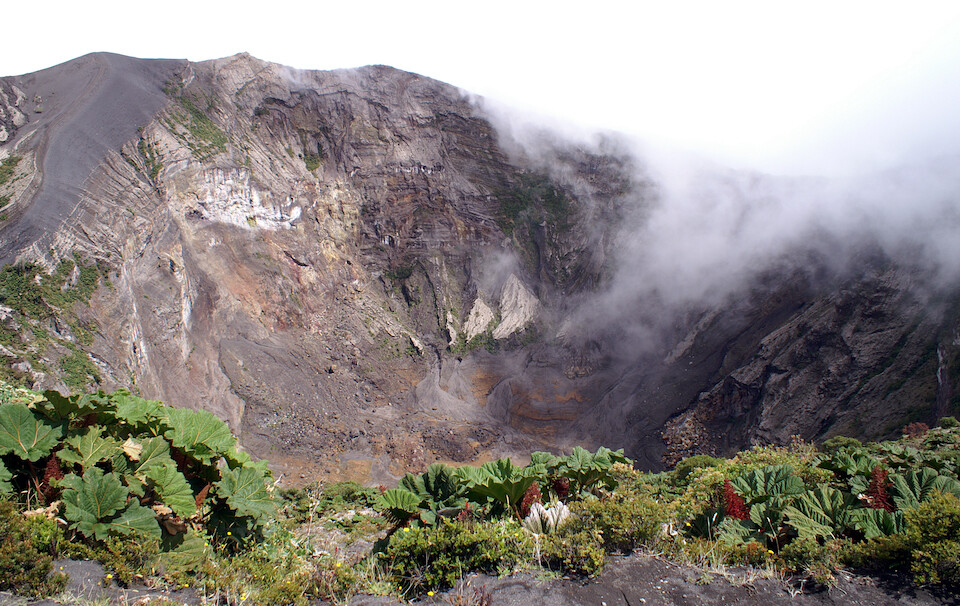
Another view of the crater as the clouds quickly rolled in. To get good views, you have to come up here early in the morning as by 9:30 am, the clouds were rolling in.
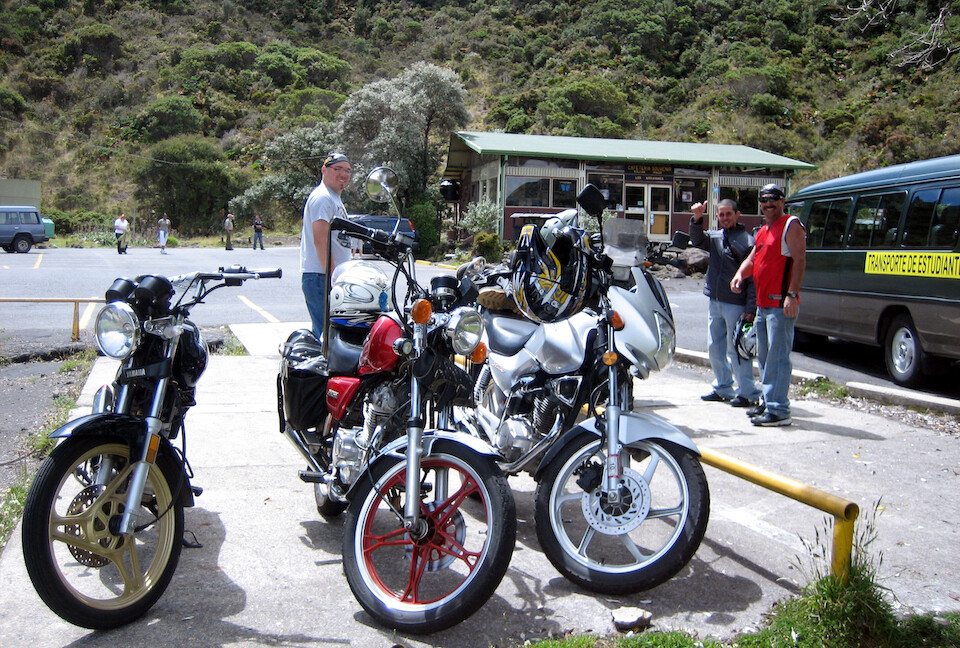
A group of local bikers from San Jose gathering around my bike and asking questions about the trip.

Riding above the clouds. The road up and down the volcano was a blast to ride with nice turns and good long distance views.
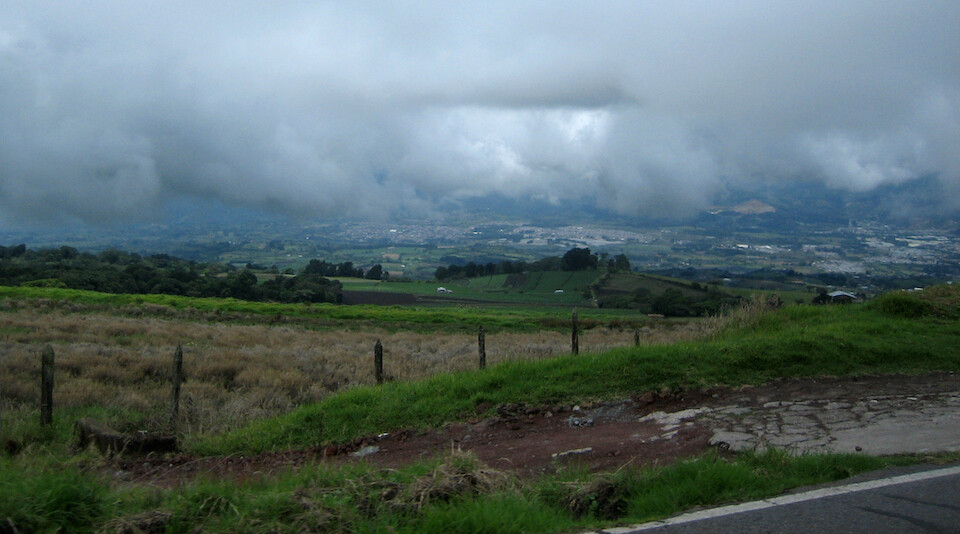
Heading back down to the valley, dropping 1,500 m (5,000 ft) in about 35 kms (22 miles).
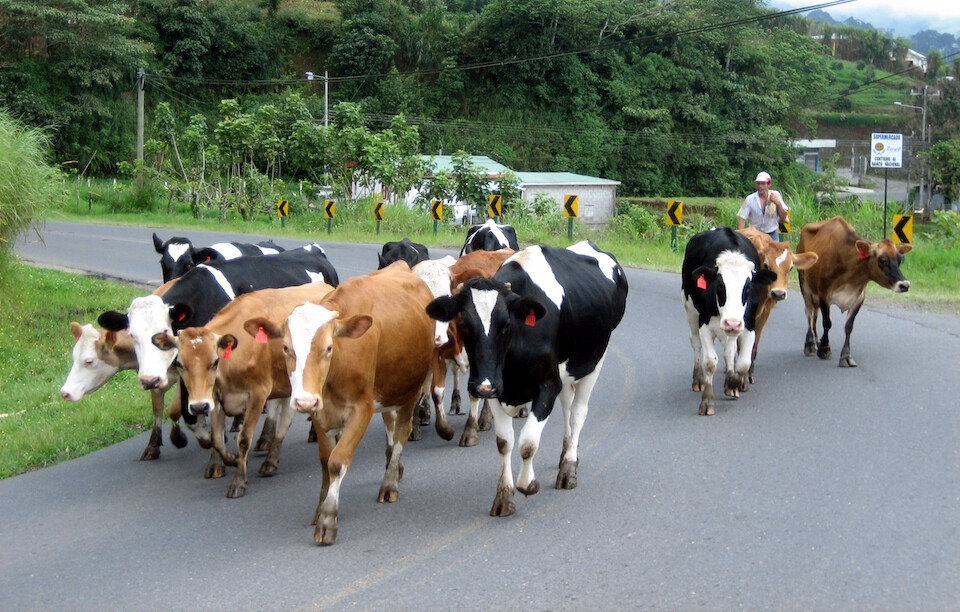
Farmers using the roadway to move their cattle between grazing areas. They looked highly suspicious of me.
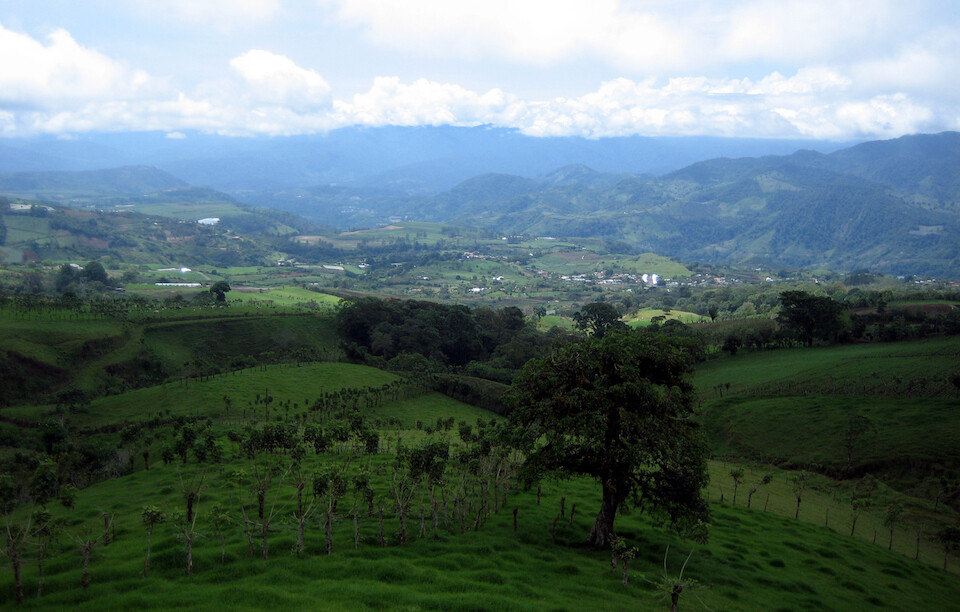
Viewpoint of lush valleys heading towards Turrialba.
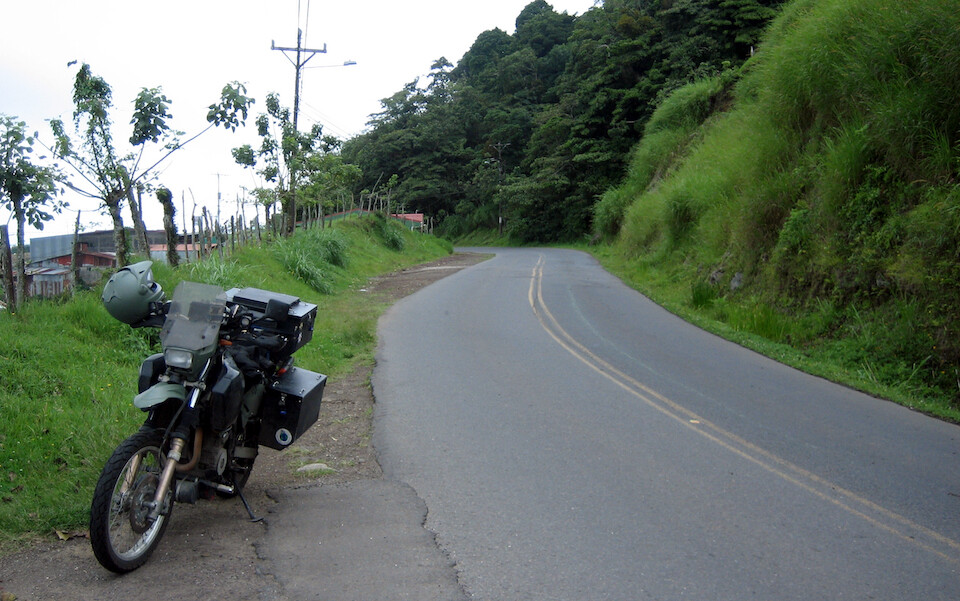
Nice riding the whole day.
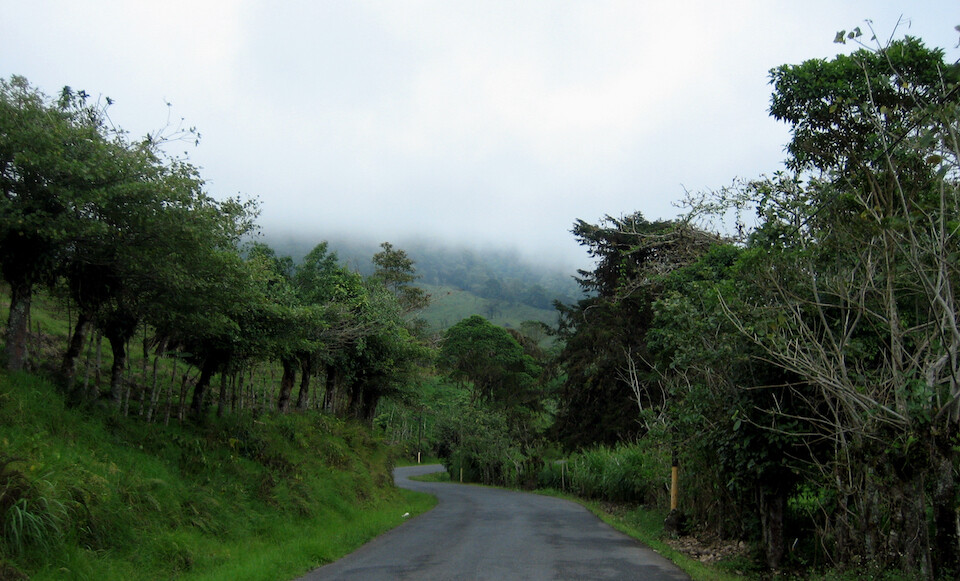
Foggy and twisty roads leading from the volcano down into the jungle.
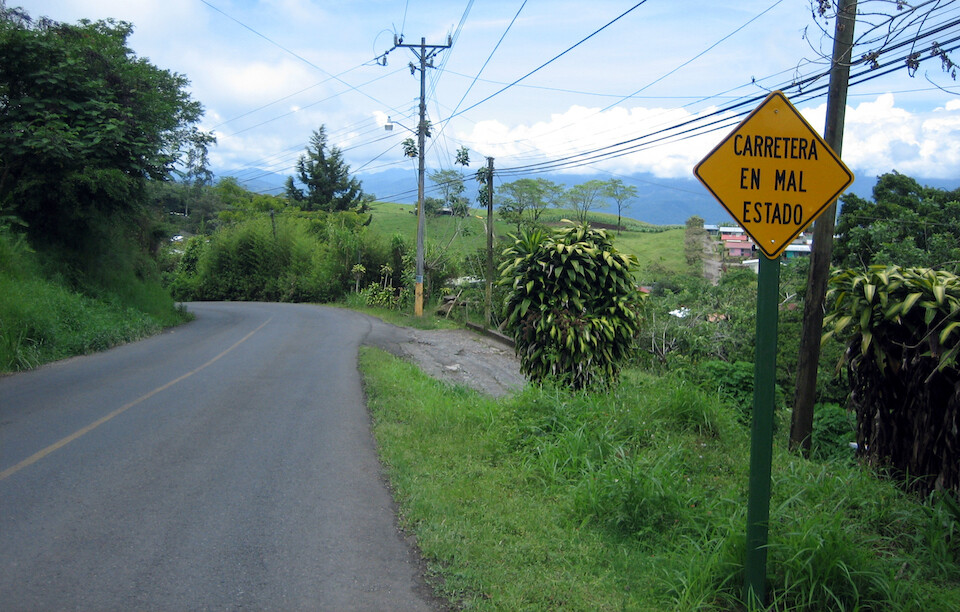
The only country admitting bad roads ahead. Translation "road in bad shape".

Down on the flat eastern plains heading to the Caribbean coast. This is still a banana republic, but tourism is the big earner for the country these days. The blue bags are to protect the bananas from insects.
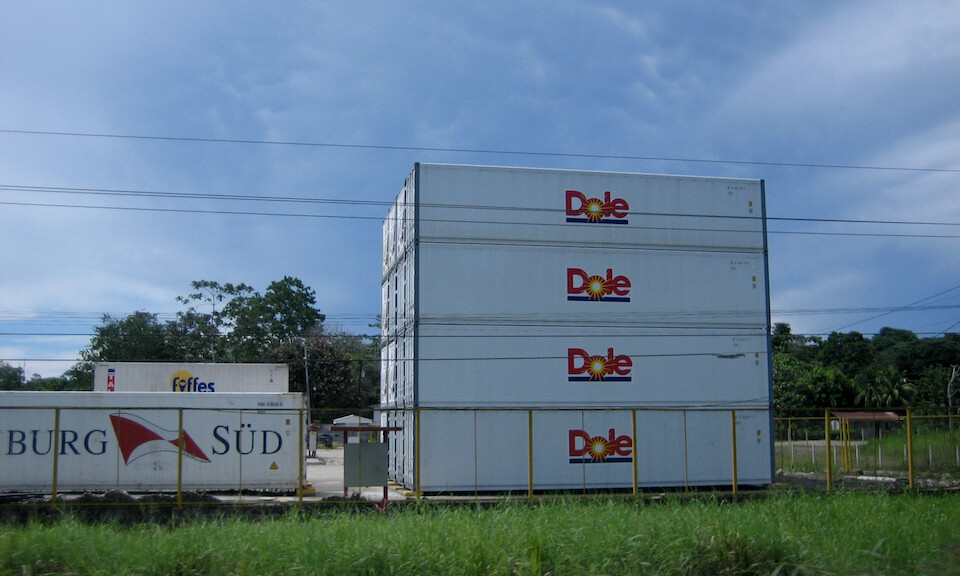
Bananas - coming soon to a grocery store near you.
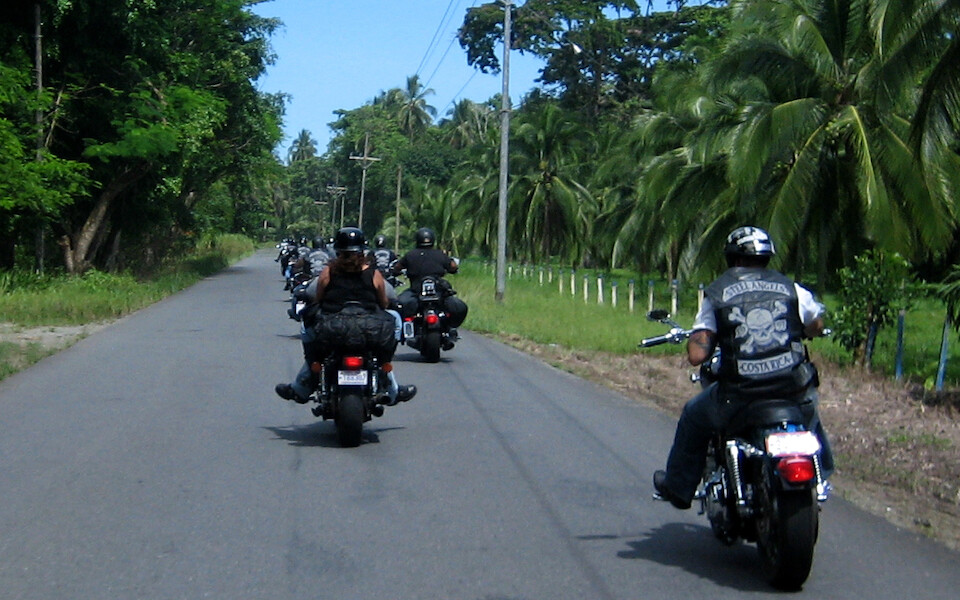
I caught up with this Harley-Davidson motorcycle group, the Steel Angels. They were out on a nice Saturday ride. Nice to see them using proper hand signals and displaying good group riding skills. When one rider stopped, the back marker stopped with him and the middle marker filtered to the back. I rode with them for a while, but they were cruising too slow even for me on the DR around 70 kmh (43 mph) and I wanted to be doing at least 85 kmh (53 mph), so I found a nice long straight and passed the whole group. There were about 30 riders.
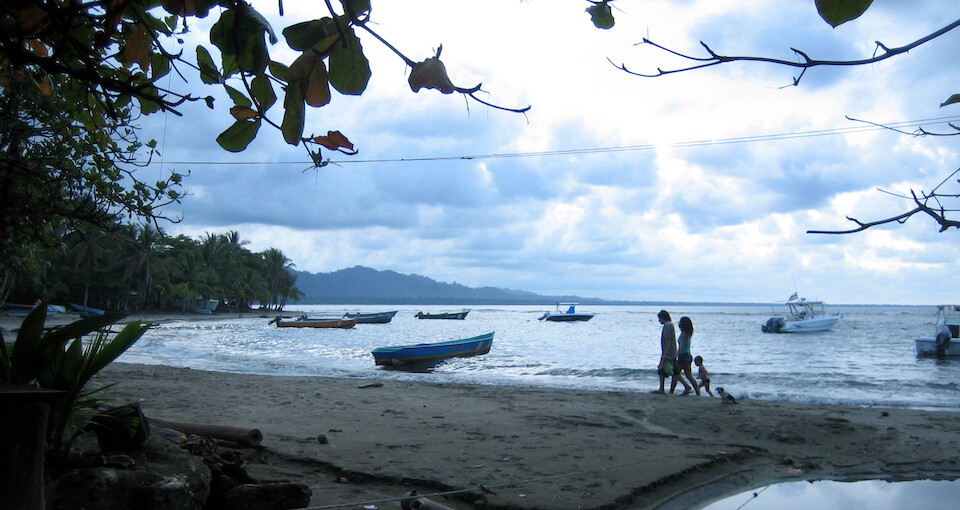
Spending a day in the Caribbean beach town of Puerto Viejo.
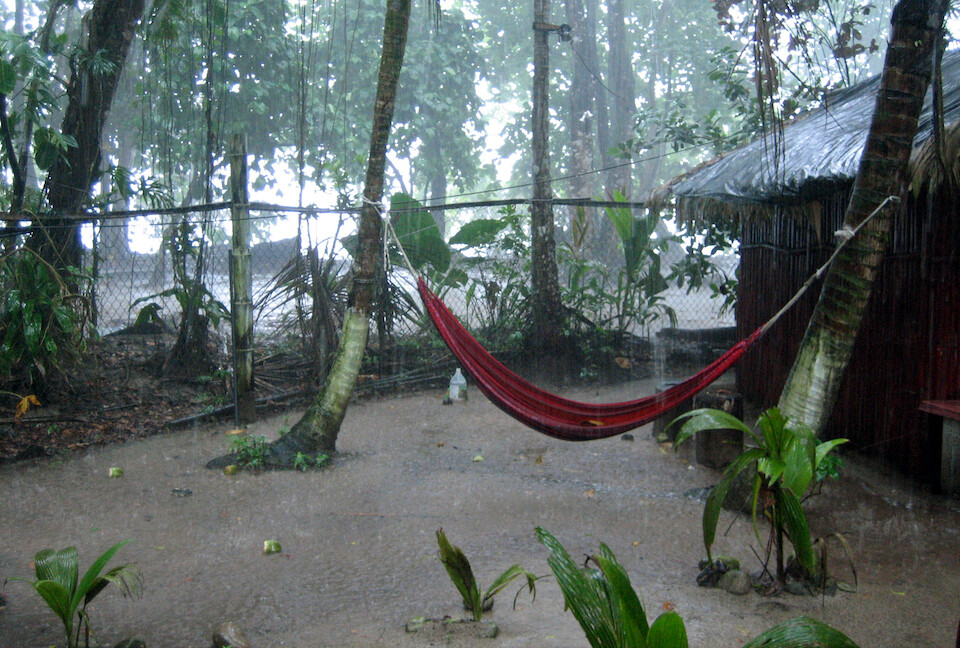
The next morning, I woke up to very loud thunder and heavy rainfall. But it was all done in a few hours and the sun and blue sky came out again.
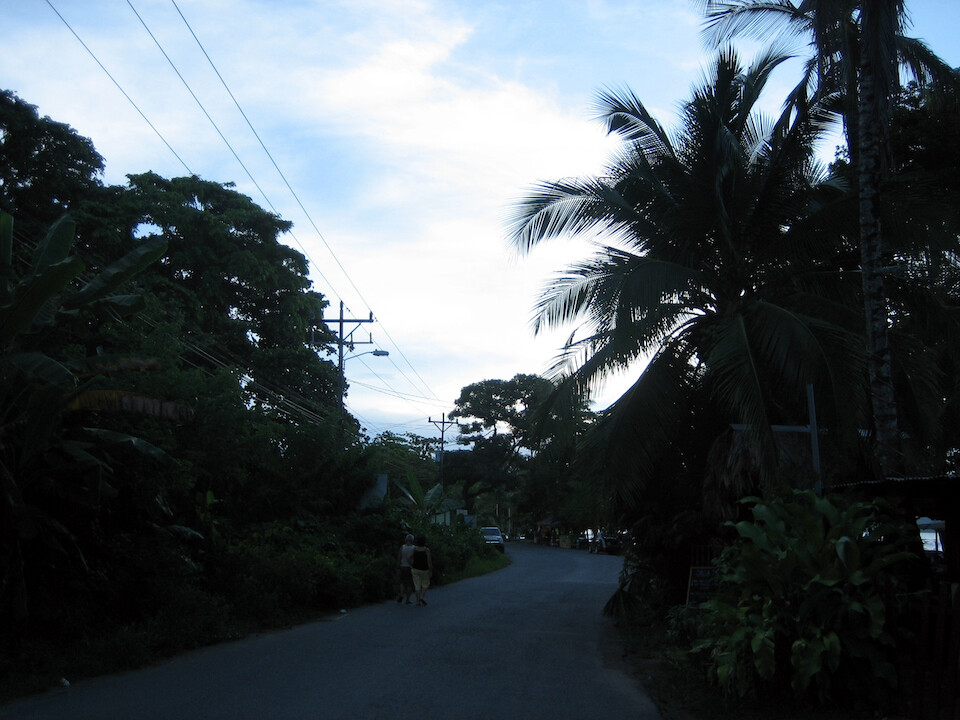
Walking into town to buy some groceries.
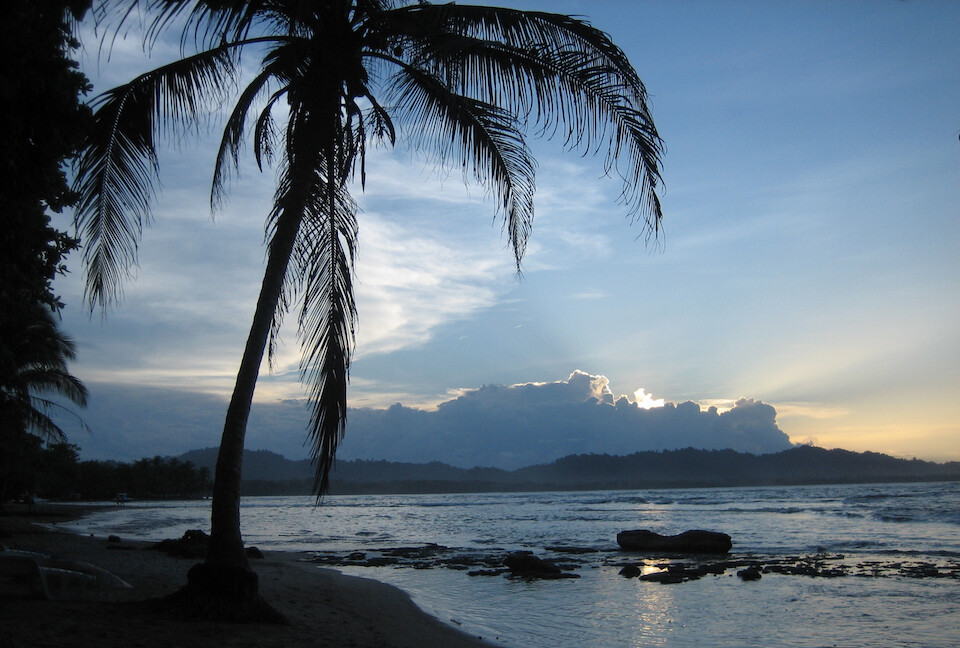
Sunsets on a beach with coconut trees can never grow old.
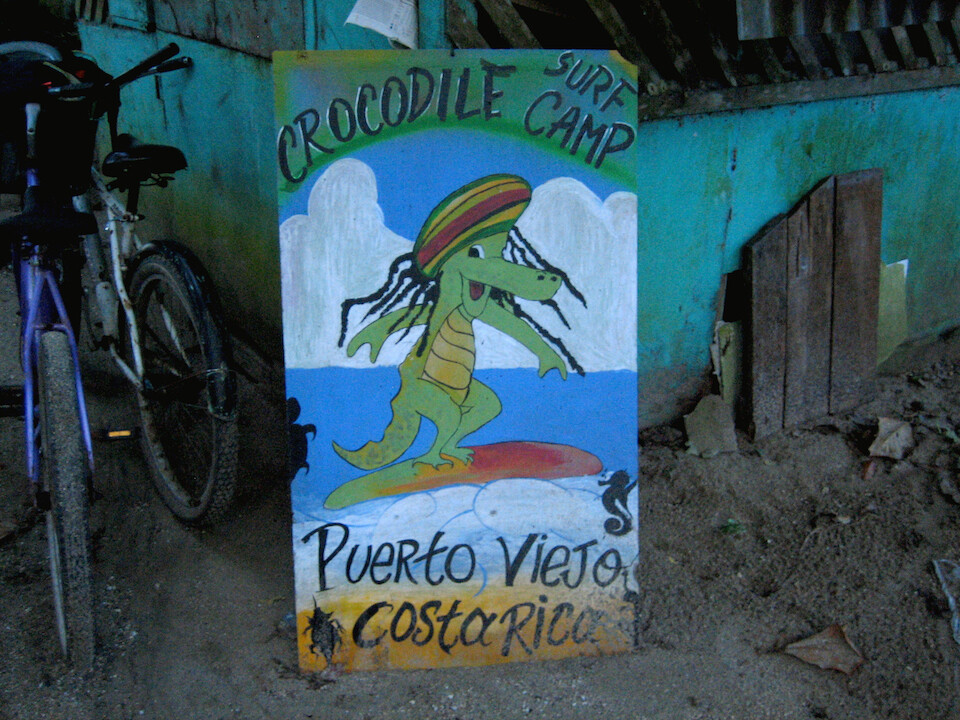
The place where I stayed, Crocodile Surf Camp. Every business in town is milking everything they can out of the rasta movement.
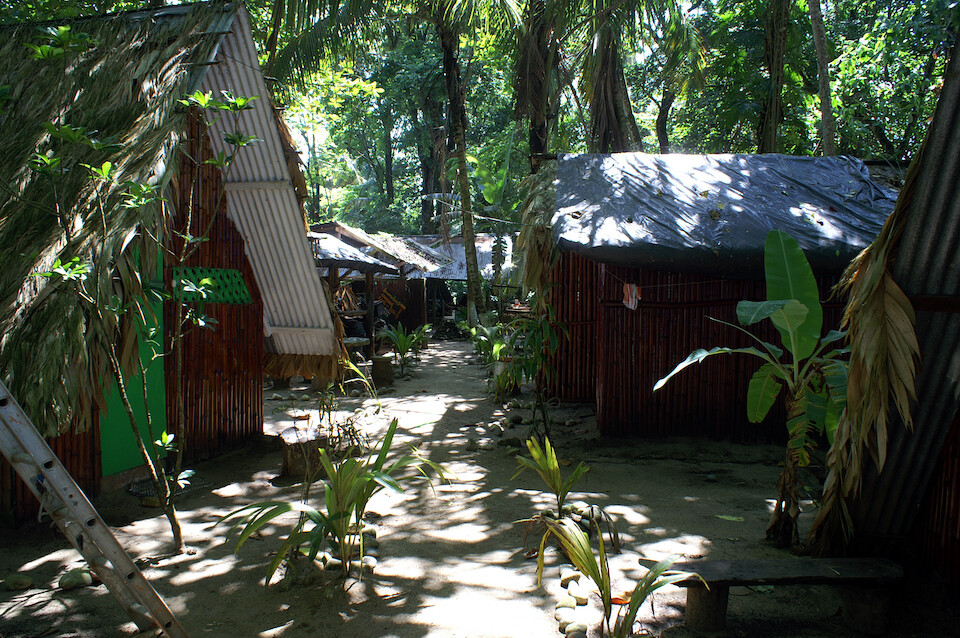
The cabins at Crocodile Surf Camp.
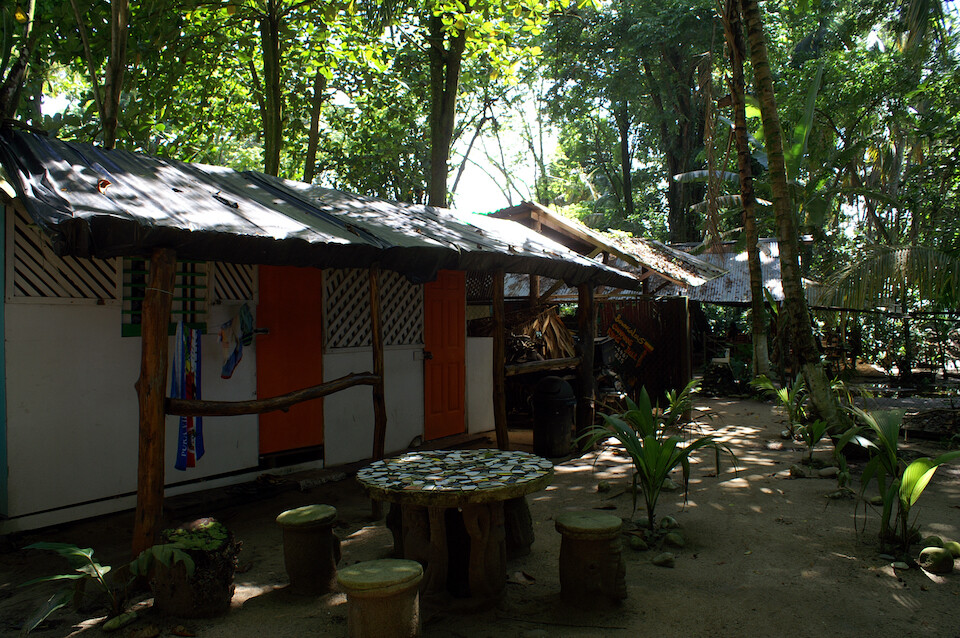
I had the room on the end for $10 a night. I thought about camping initially for $6, but with the heavy rains, was glad I got a room with a fan and WiFi.
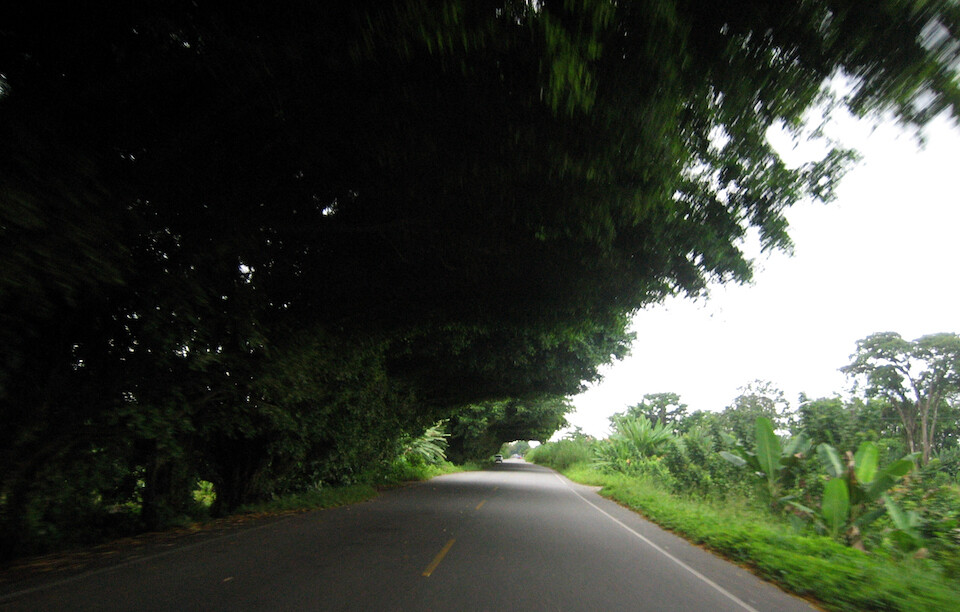
Heading to the Panamanian border at Sixaola.
Next: Panama, Part 1: Boquete & Chitre
Previous: Riding through Honduras & Nicaragua